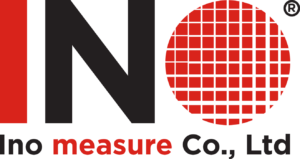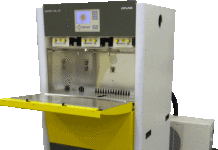Features
- Early support for 3GPP LTE (FDD/TDD) Release 9 (MBMS, Positioning RS, Transmission Mode 8: Dual Layer Beamforming)
- Early support for Carrier Aggregation, key feature of 3GPP LTE-Advanced (FDD)
- All-in-one unit supporting 2 x 2 MIMO Intra-RAT handover and 4 x 2 MIMO with 300 Mbps (Carrier Aggregation) DL and 50 Mbps UL speeds
- Inter-RAT handover tests making effective use of previous MD8480C (UTRAN/GERAN) and MD8470A (CDMA2000) hardware investments
- Optimized investment from initial R&D to protocol conformance testing
- Full development and analysis tools cutting L1, L2, and L3 scenario development time and costs
Description
Wireless devices are evolving quickly into multimedia smartphones with fast data connections due to widespread deployment of high-speed standards, such as LTE. The MD8430A Signalling Tester is a key LTE base station simulator for developing 3GPP LTE/LTE-Advanced compliant chipsets and wireless devices. In addition to verifying normal communications procedures, it supports fault operation tests, which are difficult to perform at connection with live base stations. It also supports LTE terminal R&D and verification tests under various conditions. Based on extensive experience in 3G markets, Anritsu has developed the MD8430A as a powerful LTE protocol/R&D test solution to help developers bring LTE wireless devices to market as soon as possible.
A choice of MD8430A models designed for early chipset and UE development, function tests, and performance tests ranging from carrier acceptance to protocol conformance tests, plus retrofit upgrades between models, allows developers to customize their hardware investment to current needs while assuring flexible future upgrade options.
- LTE Function Test Model (FTM)
- LTE Standard Test Model (STM)
- LTE Performance Test (PTM)
Specifications
| Model/Name | LTE Function Test Model (FTM) |
LTE Standard Test Model (STM) |
LTE Performance Test Model (PTM) |
| Interface | RF, Digital IQ | ||
| Frequency Band | 20 MHz max. | ||
| UE Category | Category 1, 2, 3 | Category 1, 2, 3, 4, 6 | |
| DL Data Rate (max.) | 75 Mbps | 300 Mbps*1 | |
| UL Data Rate (max.) | 50 Mbps | ||
| No. of Simultaneous Tx Frequencies |
1 | 2 (2 x 2MIMO), 4 (SISO) | |
| MIMO | No | 2 x 2 | 2 x 2, 4 x 2 |
| Base Station Number (max.) | Active + adjacent BTS: 1 (Active BTS: 1) |
Active + adjacent BTS: 4 (Active BTS: 2) |
Active + adjacent BTS: 6*2 (Active BTS: 2) |
| Handover (including MIMO) | None | Intra-frequency, Inter-frequency handover | |
| Carrier Aggregation: Number of Component Carriers (DL) |
None | 2*3 | |
| Carrier Aggregation: Number of Component Carriers (UL) |
None | 1*3 |
*1: For Layer-1 testing; 150 Mbps for Layer-2 (or higher) testing.
*2: For 4 x 2 MIMO, the maximum number of base stations is 1, the number of active base stations + number of adjacent base
stations is 5.
*3: The active base station is used as the component carrier.
| Tx Signal | Rx Signal | ||
| Maximum level | Main: -40 dBm (Max. setting level: -20 dBm) Sub: 0 dBm |
Input level | Main: -30 to +35 dBm Sub: -45 to +20 dBm |
| Level accuracy | ±1.5 dB Main: -113 to -40 dBm Sub: -113 to -0 dBm (After calibration, 18° to 28°C) |
Level accuracy | Main: ±3.0 dB Sub: ±3.0 dB (After calibration, 18° to 28°C) |
| Frequency | 350 MHz to 3800 MHz (100-kHz setting resolution) |
Frequency | 350 MHz to 3800 MHz (100-kHz setting resolution) |
| Access method | OFDMA | Access method | SC-FDMA |
| Modulation method | QPSK, 16QAM, 64QAM | Modulation method | QPSK, 16QAM, 64QAM |
| Modulation accuracy | ≤2 % Sub-output, 0 dBm, 18° to 28°C LTE (OFDM 64QAM 20-MHz band) |













![[AECO- Fiber Optic Sensors- Cảm biến vị trí sợi quang- Những tính năng ưu việt]](https://www.aoip.com.vn/wp-content/uploads/12-100x70.png)







Comments are closed.